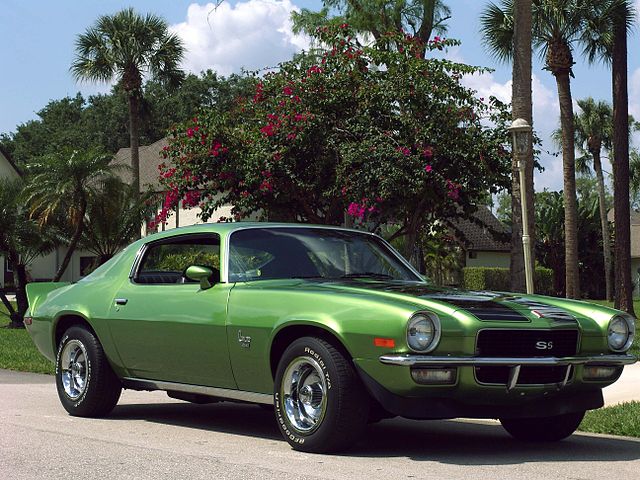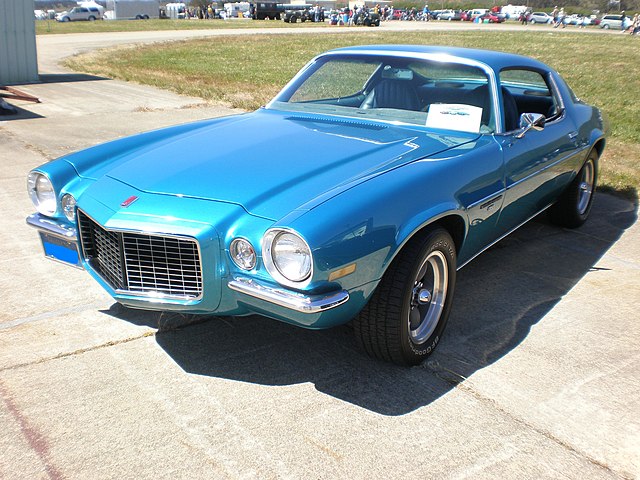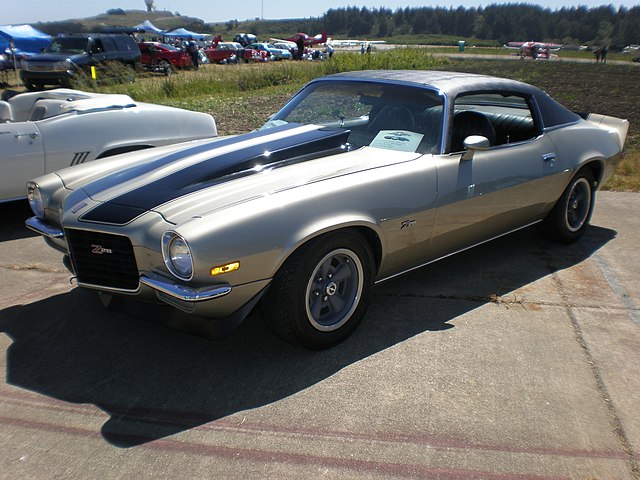
The Chevrolet Camaro, an iconic name in American muscle cars, saw a significant redesign with its second generation, which was produced from 1970 through 1981. This generation marked a distinct departure from the first-generation Camaro in terms of styling and performance, adapting to a changing market and new consumer demands.
Below is a detailed exploration of this classic vehicle, covering its design evolution, performance specifications, cultural impact, variations, and legacy.
Introduction to the Second Generation Camaro

Overview
The second generation of the Chevrolet Camaro debuted in the 1970 model year and continued through 1981. This generation introduced a more dramatic, sculptured body styling, which was significantly different from the boxier shape of the first generation. Unlike its predecessor, the second generation was available only as a coupe, with no convertible option offered throughout its run.
Design Philosophy
Chevrolet designers aimed to give the Camaro a European look, with a low-slung, sweeping silhouette inspired by European grand touring cars. The result was a vehicle that looked more aggressive and sportier than its predecessor. The design included a long hood, a short deck, and wide stance, and it featured improved aerodynamics which were becoming more important in automotive design at the time.
Market Context
The early 1970s were a challenging time for the American auto industry due to new emissions and safety regulations, as well as the 1973 oil crisis. These factors influenced the design and engineering of the Camaro, as Chevrolet began to focus more on meeting regulatory demands and less on pure performance.
Performance and Specifications

Engine Options
Over the years, the second generation Camaro was offered with a wide range of engines. The 1970 model year started strong with an impressive lineup including the formidable SS 396 (6.5-liter V8) and the Z28’s 350 cubic-inch (5.7-liter) V8. However, performance began to decline by mid-decade due to stricter emissions standards, leading to the use of smaller and less powerful engines.
Transmission and Handling
Customers could choose from various transmissions, including a four-speed manual, a three-speed manual, and a two-speed automatic, which later became a three-speed automatic. The car was built on a unibody structure with a front subframe, coil springs at the front, and leaf springs at the rear, which provided a balance between sporty handling and ride comfort.
Performance Over the Years
Despite the decrease in engine power in the later years, the Camaro still offered respectable performance and handling capabilities. The introduction of the Z28 model in 1970 and its continuation throughout the generation signified Chevrolet’s commitment to maintaining the Camaro’s performance-oriented image.
Model Variations and Special Editions

Z28 – The Performance Icon
The Z28, reintroduced in 1970 after a brief hiatus in 1968 and 1969, featured a high-performance 350 cubic-inch V8 that made it a favorite among enthusiasts. This model was continuously upgraded with various suspension enhancements and other performance tweaks throughout its run, maintaining its status as a performance benchmark.
RS and SS Packages
The Rally Sport (RS) package offered styling upgrades such as a distinctive nose and bumper treatment, while the Super Sport (SS) provided more performance upgrades, including a more powerful engine and, initially, better handling characteristics. Over time, these packages reflected shifts in consumer preferences from performance to luxury and comfort.
Special Editions
Over the years, several special editions were released, including the 1978 Z28 with its distinctive striping, more aggressive stance, and improved aerodynamics, and the 1980-1981 Turbo model, which featured a turbocharged engine, a rare feature for Camaros.
Cultural Impact

Racing Heritage
The Camaro continued to build its reputation on the racetrack, participating in series such as the Trans-Am racing series. Its performance on the track helped to cement its image as a muscle car and elevated its status among car enthusiasts and the general public.
In Media and Pop Culture
The second-generation Camaro gained significant exposure in movies, television, and music, becoming a symbol of high performance and youth culture. Its aggressive styling and powerful engine options made it a popular choice for appearances in various media throughout the 1970s and beyond.
Collectibility Today
Today, the second-generation Camaro holds a special place in the hearts of collectors and enthusiasts. Its distinct look and the nostalgic appeal of its performance versions, especially the early Z28s and SS models, make it highly sought after in the collector car market.
Legacy and Influence

Influence on Later Generations
The second-generation Camaro influenced subsequent designs with its emphasis on a more aerodynamic, sporty body. Its design cues can be seen in later models, particularly in the revival of classic styling elements in the fifth-generation Camaro introduced in 2010.
Legacy in the Automotive World
The second-generation Camaro remains a symbol of the transition in the automotive world from raw power to a more balanced approach that includes style, handling, and efficiency. It stands as a testament to the era when performance and design started to coalesce in new and exciting ways.
Enduring Popularity
Even decades after the last model rolled off the assembly line, the second-generation Camaro continues to be celebrated at car shows, in clubs, and in various restoration projects around the world. Its enduring appeal is a testament to its iconic status in the pantheon of classic American muscle cars.
The Chevrolet Camaro’s second generation not only encapsulated a pivotal era in automotive history but also left a lasting imprint on car culture and remains a beloved chapter in the legacy of American performance vehicles.
